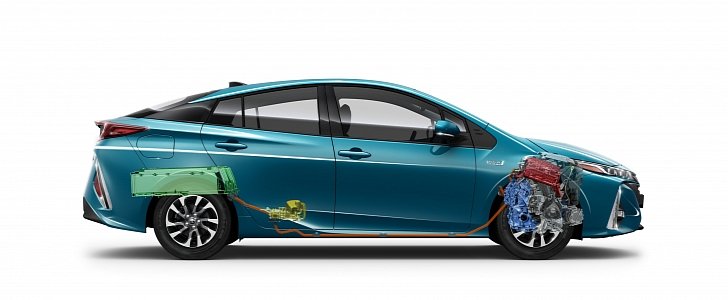For years, hybrid vehicles have been presented as the solution to the ever-growing levels of carbon dioxide released into the atmosphere. It seemed installing a small electric motor under the hood worked wonders and was able to cut fuel consumption considerably.
Their place has since been taken by the fully-electric vehicles with their zero tailpipe emissions, but this demotion doesn't mean they've escaped industry scrutiny altogether. In fact, a recent report signed by the Australian Automobile Association (AAA) found out that real-world fuel consumption of hybrid vehicles is worlds apart from the one written on their specs sheets.
The AAA conducted tests on 30 new cars and found out that some of them were using 59 percent more fuel than claimed by their manufacturers. One undisclosed PHEV model in particular stole the show by burning four times as much fuel as it was officially supposed to, Xinhua Net reports.
We suspect that's down to the methodology of testing the fuel consumption for these plug-in hybrid vehicles. Since they have a limited all-electric range, those miles are considered covered without using any fuel. Whether it's liters per 100 kilometers or miles per gallon, the result will be vitiated by this technique. Unaware buyers will actually believe their cars will do 99.9 mpg at all times, and not just when the battery is full and the stars align.
This is precisely what the AAA is using its findings for: to convince the Australian government to enforce real-world emission tests for new cars that would give prospective buyers a more accurate idea of what to expect from their vehicles.
"More stringent emissions laws are meant to reduce pollution and drive down fuel use, however our results suggest such benefits largely occur only in the laboratory," Michael Bradley, Chief Executive Officer (CEO) of the AAA, said.
"Australian motorists have a right to accurate information about fuel consumption and environmental performance when buying a new car. The current system is misleading consumers and regulators. Only real-world testing can drive down costs to consumers and deliver meaningful environmental benefit."
The AAA conducted tests on 30 new cars and found out that some of them were using 59 percent more fuel than claimed by their manufacturers. One undisclosed PHEV model in particular stole the show by burning four times as much fuel as it was officially supposed to, Xinhua Net reports.
We suspect that's down to the methodology of testing the fuel consumption for these plug-in hybrid vehicles. Since they have a limited all-electric range, those miles are considered covered without using any fuel. Whether it's liters per 100 kilometers or miles per gallon, the result will be vitiated by this technique. Unaware buyers will actually believe their cars will do 99.9 mpg at all times, and not just when the battery is full and the stars align.
This is precisely what the AAA is using its findings for: to convince the Australian government to enforce real-world emission tests for new cars that would give prospective buyers a more accurate idea of what to expect from their vehicles.
"More stringent emissions laws are meant to reduce pollution and drive down fuel use, however our results suggest such benefits largely occur only in the laboratory," Michael Bradley, Chief Executive Officer (CEO) of the AAA, said.
"Australian motorists have a right to accurate information about fuel consumption and environmental performance when buying a new car. The current system is misleading consumers and regulators. Only real-world testing can drive down costs to consumers and deliver meaningful environmental benefit."

